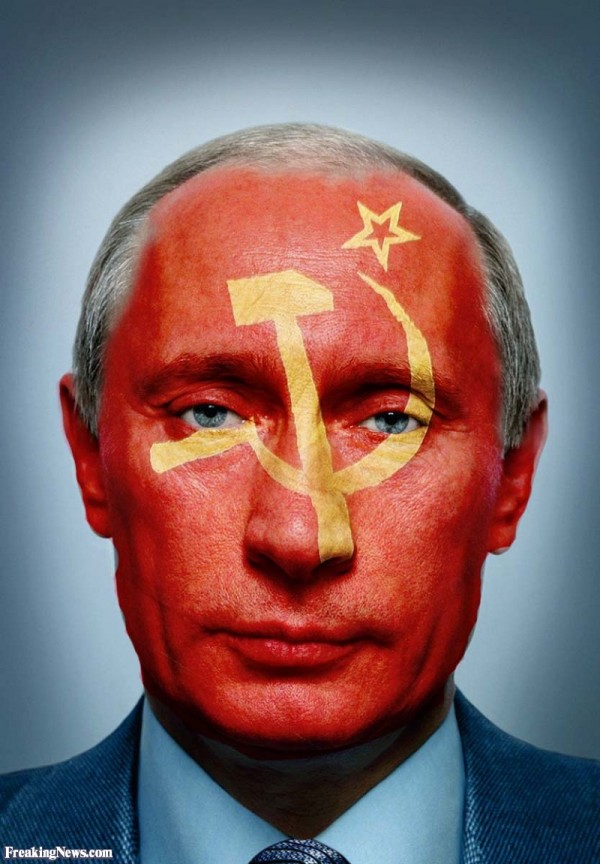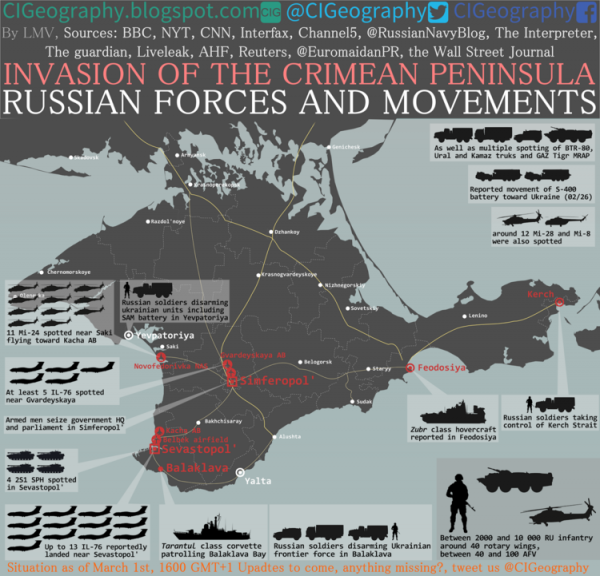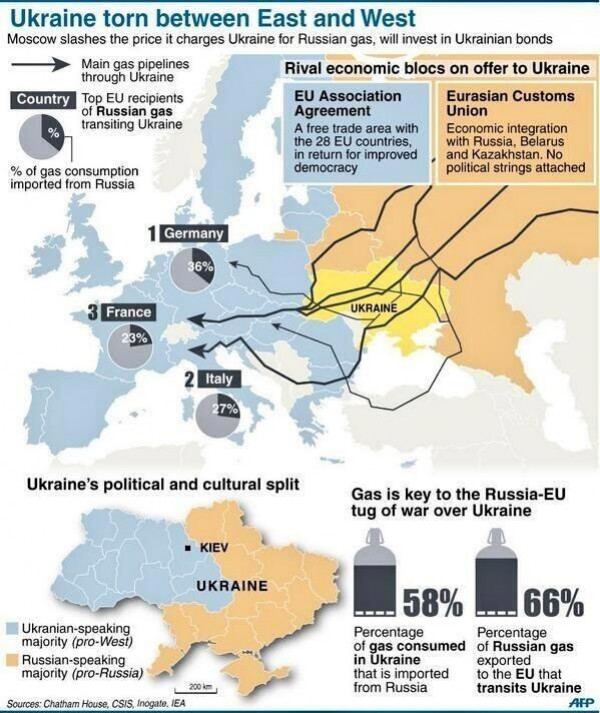
Photo via FREAKINGNEWS
THE GUARDIAN: After several days of Russian stealth, the move to deploy forces came suddenly and decisively. The Kremlin said Putin wanted troops in Ukraine “until the sociopolitical situation is normalised”. Less than an hour later, in a hastily convened extraordinary sitting of Russia’s Federation Council that was laced with cold war rhetoric, senators voted unanimously to support Putin’s plan, and proposed withdrawing Russia’s ambassador to the US. MORE
BBC: The lightness, the hint of a Kiev spring, the sudden smiles of a week before were already waning. Now the mood is much darker; there is defiance and rage against Moscow and Putin. Just seven days earlier some had dared to speak of “victory”; now the talk is of war. Speaking of Russia’s actions in Crimea, the new Prime Minister Arseniy Yatsenyuk said “this is the red alert, this is not a threat, this is actually a declaration of war”. All weekend the drumbeat of alarm has grown stronger; the biggest confrontation between Russia and the West since the Cold War. The secretary general of Nato says “peace and security in Europe” is threatened.
The biggest fear is of an accidental war. A miscalculation at a road block or outside a military post could rapidly escalate into conflict. It will be much longer and much bloodier than the five-day war I covered in Georgia in 2008. This time President Putin has moved quickly in Crimea. There is already a new reality on the ground. Pro-Moscow demonstrators in other places are making the same pitch, that they would like Russia’s help. In this moment Putin will be calculating the West’s response and its determination to act. He is not alone. So are the leaders of the protestors, many of whom now sit in government. They are urging states “who guaranteed Ukraine’s integrity to fulfil their obligations” – in particular they are looking to the EU.
The first test of the West’s intention will be Germany. Will Berlin with its special economic relationship with Moscow and its energy dependency be prepared to make a sacrifice to hold Putin’s hand?” To a remarkable degree EU officials championed their cause. They stood shoulder to shoulder with the protestors. They chose to ignore the fact that -tolerate or loathe him – Viktor Yanukovich was an elected leader. They glossed over the significant role played by nationalist groups in the defence of Independence Square. And they were clear with their intentions – “the future of Ukraine belongs with the EU,” said President Van Rompuy. It infuriated Moscow who saw it as a power grab in its own zone of influence. MORE

Click HERE to enlarge
RELATED: Over the course of the past 200 years, a new modern Ukrainian national identity was being forged. At the same time, the dominant Russian ideological narrative has been that Ukrainians are but a (lesser) branch of the Russian nation, that there is no such thing as a distinct Ukrainian language (with Russia nevertheless acting to restrict and ban the use of this language), that Ukraine and Ukrainians as a separate entity are an aberration on Russian territory. For all the absurdity of this view, quite many people in Russia still subscribe to it. Alternatively, others follow the Soviet practice of recognizing ethnic difference but rejecting the possibility of a distinct and uniting Ukrainian civic national identity. This makes Russian colonialist attitude to Ukraine different from the colonialist attitude towards the Caucasus or Central Asia. Their otherness is not disputed when they are treated with racist prejudice. In the case of Ukraine and Ukrainians, there is both condescension from Russia and a refusal to recognize Ukraine as something truly distinct. MORE
FACEBOOOK: There are two historical elements to understand. The first is “Holodomor” which means “death by starvation.” Holodomor was a man-made (Stalin) famine in 1932-33 which targeted Eastern Ukraine. It is estimated that 7-10 million ethnic Ukrainians died from forced starvation. It is one of the greatest tragedies in Ukrainian history. Now, once that part of Ukraine was “cleansed” of ethnic Ukrainians those abandoned homes, farms, villages were re-settled by ethnic Russians (not necessarily willingly – but this was Soviet assimilation). Russification intensified. That means that people in Ukraine, Belarus and other countries were pushed into intense Russian culturization (language, customs, housing, occupations, even clothing and art), all at the expense of their own cultures. Feel free to read this on your own, but its one thing the news hasn’t touched upon and sheds some light on the history of Eastern Ukraine.

